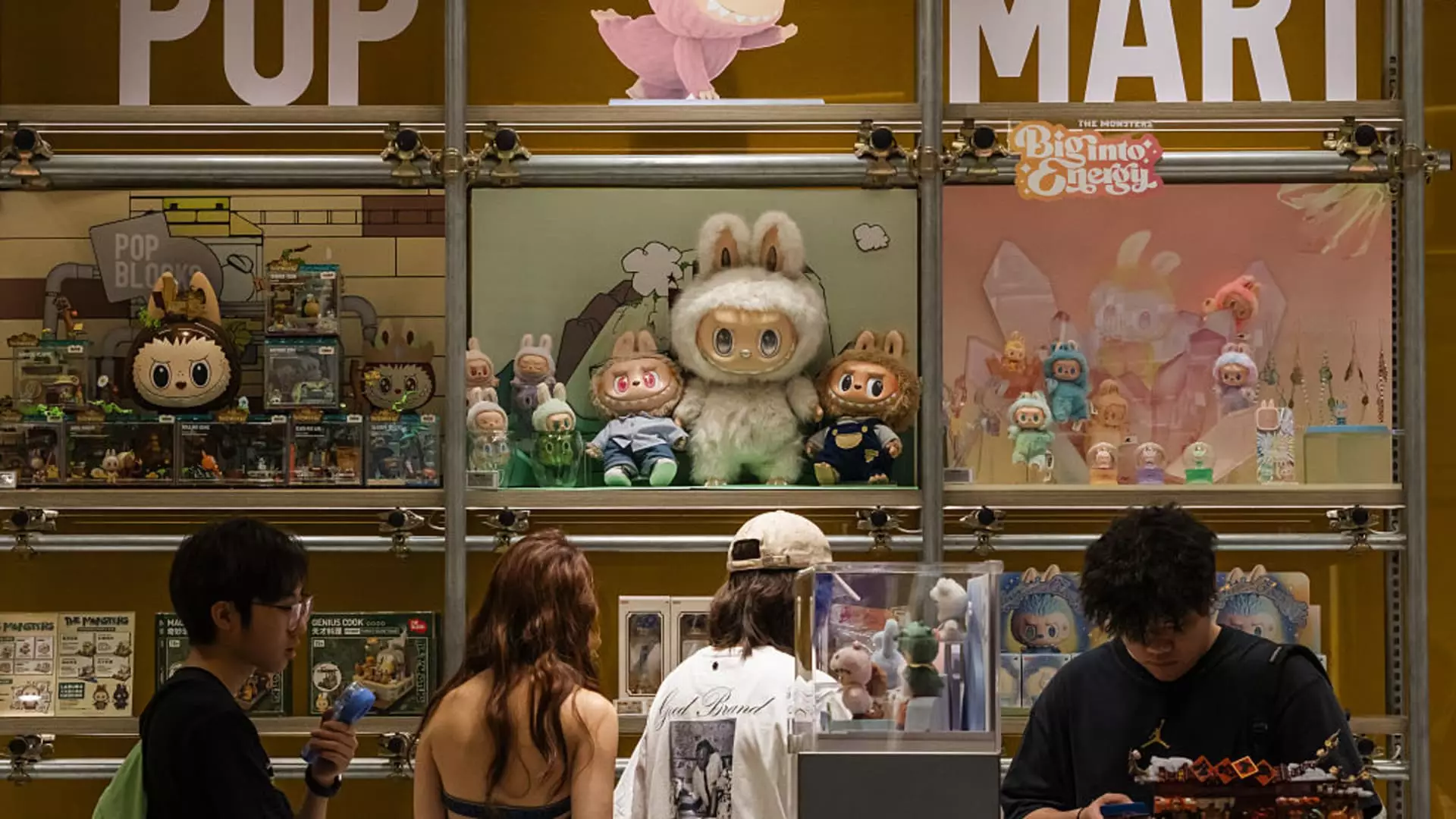In the ever-evolving landscape of consumer trends, few things capture the public’s imagination like the “blind box” toy phenomenon sparked by Pop Mart. This Beijing-based toymaker introduced a unique concept where consumers buy unmarked boxes filled with mystery figurines, creating a frenzied hunt for their next prized possession. Initially, this approach galvanized sales, driving Pop Mart’s shares to an impressive peak. However, recent developments reveal a sobering story—shares plummeting due to regulatory scrutiny and emerging doubts about the sustainability of the model. The stark contrast from soaring popularity to troubling forecasts highlights a critical juncture for the company that could lead to its downfall if not managed adeptly.
Regulatory Scrutiny and Investor Response
On a seemingly ordinary Friday, Pop Mart’s stock faced a significant downturn—more than 5% in just a single day, and a staggering 13% over the week. The catalyst for this abrupt fallout? A combination of Morgan Stanley’s decision to strip Pop Mart from its focus list and a scathing critique from the People’s Daily, the mouthpiece of the Chinese Communist Party. The publication’s reprimand signals an alarming trend towards tighter regulations on the “blind box” market, hinting at broader governmental concerns regarding consumer spending patterns among impressionable youth. The cloud of uncertainty hanging over the toy industry could feasibly lead to an even darker outlook for Pop Mart, especially as investors reassess their faith in what was once considered a cash cow.
The Power of Speculation and Market Rationality
Morgan Stanley’s shift to replace Pop Mart with the more stable PICC P&C insurance company underscores a critical sentiment: market dynamics are inherently volatile and discerning. Analysts have hailed Pop Mart as a lucrative growth story with projections indicating further potential. However, Morgan Stanley’s change of heart suggests that the exuberance surrounding the stock may have led to speculative overvaluation. While the company did hit a dizzying high of 283.40 HKD, doubts are now rising about its long-term sustainability as analysts foresee diminishing outperformance in the near future.
Dustin Wei, an equity analyst, captured this sentiment succinctly by noting that while the market has accounted for exponential growth through 2025, true conviction regarding the company’s future viability remains fragile. In a world where investors worship at the altar of progress, Pop Mart’s struggles compel all stakeholders to reconsider the risks associated with rapid growth and speculative investments.
Pop Mart’s Global Expansion: A Double-Edged Sword
On the surface, Pop Mart’s international expansion may appear to be a strategic move that capitalizes on the buyer’s appetite for limited edition collectibles. With sales surpassing an impressive 5.1 billion Yuan in 2024 alone, it seems clear that there is a growing demand for quirky toys among adult collectors as well as children. Despite this positive trajectory, one must question the once-nascent brand’s ability to maintain its momentum. Elaborate marketing strategies might be effective in the short term, but can they sustain a brand in an era marked by rapidly shifting consumer preferences?
Pop Mart’s foray into global markets—highlighted by online sales platforms and physical stores in countries such as the United States and the U.K.—has undoubtedly amplified visibility. Yet the brutal reality remains: each new endeavor sows the seeds of regulatory challenges and potential cultural misalignments. In a fascinating twist, while foreign markets welcomed Pop Mart, domestic regulatory backlash has put a pronounced emphasis on the need for responsible consumption.
Discerning Trends in a Quirky Collectibles Market
There is a fascinating subplot unfolding in the world of toys; the surge of interest transcends age demographics as youngsters and adults alike vie for the latest collectible merchandise. However, is this obsession built on a flimsy foundation? Jacob Cooke, a market expert, controversially remarked that Pop Mart’s success may be as much about luck as it is strategy. The once-coveted figurines have ebbed into scarcity, exemplified by one Labubu figurine fetching an astounding $170,000 at auction while more accessible versions vanish from shelves in mainland China. Such trends fuel speculation about the toy industry, but they also introduce disconcerting questions about consumer culture.
In an age where various fads rise and fall at breakneck speed, the aura surrounding collectibles can just as swiftly dim. Pop Mart, through strategic management and objectivity, must acknowledge that their brand’s identity is at stake—a misstep could easily lead them to become a relic of a past craze rather than a beloved staple in households worldwide.

